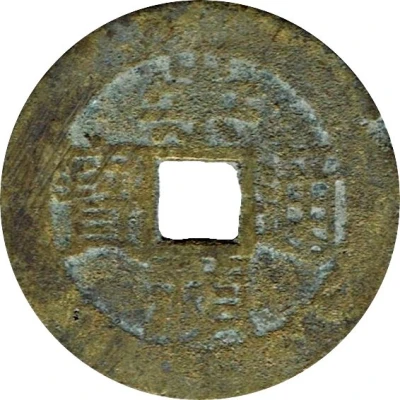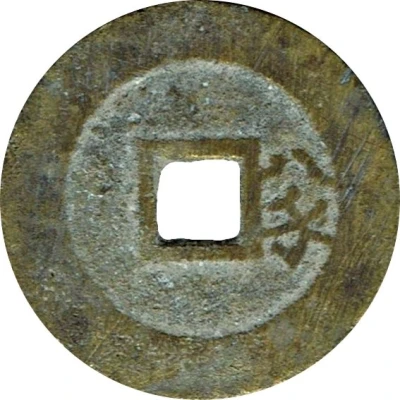1 Cash - Chongzhen Tongbao; southern type; Hui Yi ND
| Brass | - | 22 mm |
| Issuer | Empire of China |
|---|---|
| Emperor | Ming dynasty › Chongzhen (崇祯帝) (1627-1644) |
| Type | Standard circulation coin |
| Years | 1630-1644 |
| Value | 1 Cash |
| Currency | Cash (621-1912) |
| Composition | Brass |
| Diameter | 22 mm |
| Shape | Round with a square hole |
| Technique | Cast |
| Orientation | Medal alignment ↑↑ |
| Demonetized | Yes |
| Updated | 2024-10-03 |
| Numista | N#222954 |
|---|---|
| Rarity index | 100% |
Reverse
One Chinese ideogram to the right and one to the left.
Script: Chinese (traditional, regular script)
Lettering: 一戸
Translation:
Hu Yi
Ministry of Revenue (mint) / 1 Cash
Edge
Plain
Comment
Hartill suggests the larger, heavier coins (around 26 millimetres and weighing 1.3 Qian) were the first 1 Cash pieces produced. By 1630, coins minted in the north weighted 1.0 Qian and coins minted in the south weighed 8 Fen or less.The Northern types and the Southern types are differenciated by the left part of Zhen.
- Northern types: 礻
- Southern types: 示
Interesting fact
One interesting fact about the Standard circulation coin 1 Cash - Chongzhen (Tongbao; southern type; Hui Yi) ND (1630-1644) from Empire of China made of Brass is that it was used as a form of currency during a time of great economic change in China. The Chongzhen era saw the introduction of a new monetary system, and the use of brass coins like this one helped to facilitate trade and commerce across the empire. Despite being made of a relatively low-value material, the coin was widely accepted and used in everyday transactions, demonstrating the resourcefulness and adaptability of the Chinese people during a time of economic transformation.

